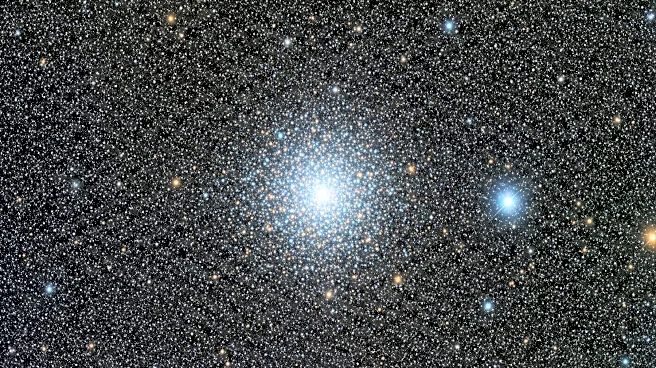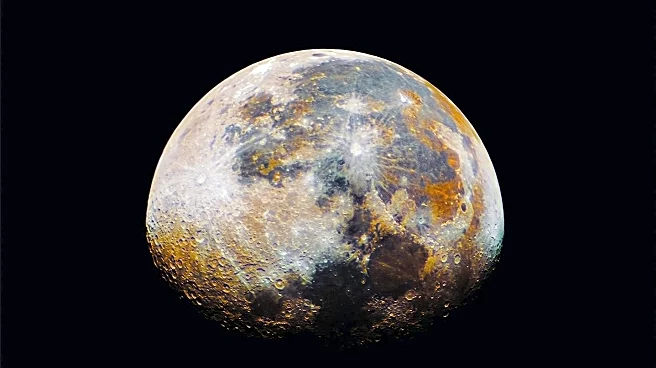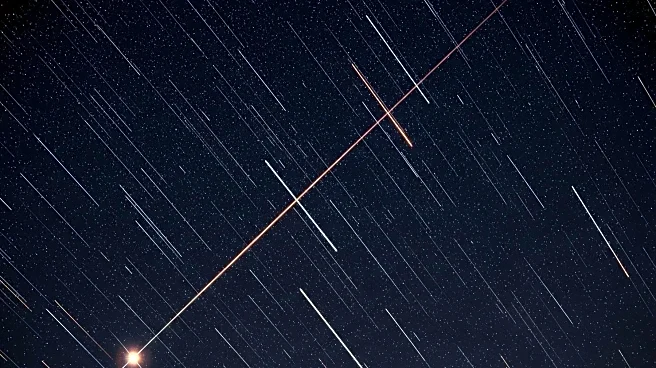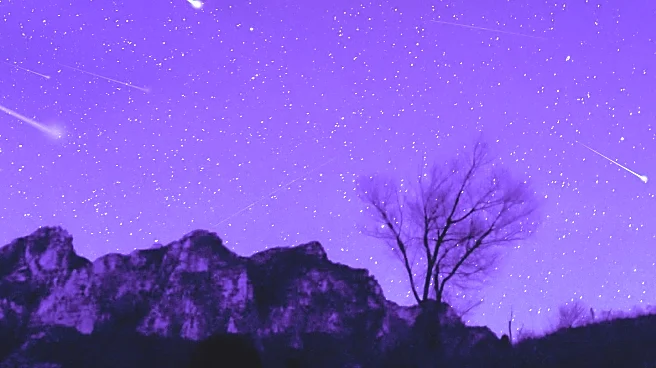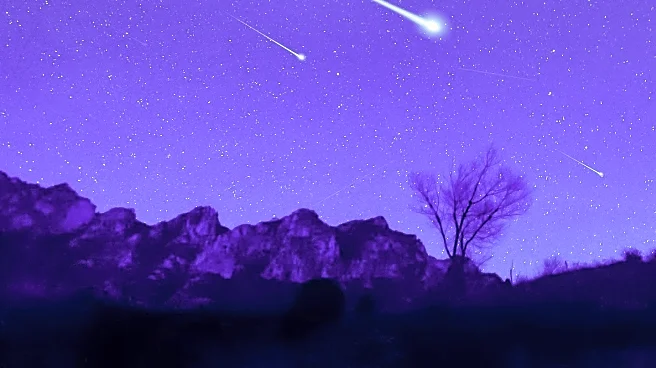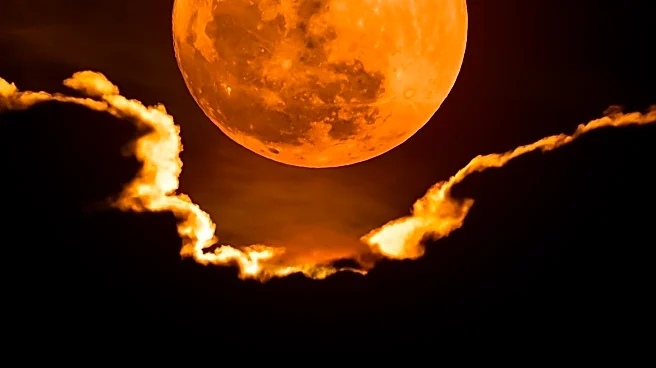What's Happening?
Astronomy Magazine's Editor Emeritus, Dave Eicher, has highlighted an upcoming celestial event where the bright gibbous Moon will pass by the Pleiades star cluster on the night of October 9, 2025. The Pleiades, also known as M45, is one of the sky's most prominent open clusters, often resembling a small dipper. Eicher encourages skywatchers to observe this event, noting that while the Moon will be bright, binoculars can aid in spotting the Pleiades. This event is part of a series of astronomical observations that include other celestial phenomena occurring in early October.
Why It's Important?
This celestial event offers an opportunity for both amateur and professional astronomers to observe and appreciate the dynamics of the night sky. The proximity of the Moon to the Pleiades provides a unique viewing experience, enhancing public interest in astronomy. Such events can inspire educational activities and increase public engagement with science, potentially fostering a greater appreciation for space exploration and observation. The visibility of the Pleiades alongside the Moon can also serve as a practical demonstration of celestial navigation and the movement of astronomical bodies.
What's Next?
Following this event, astronomy enthusiasts may look forward to other celestial occurrences highlighted by Astronomy Magazine, such as the transit of Titan's shadow and the visibility of Ceres in Cetus. These events provide ongoing opportunities for observation and study, encouraging continued interest and participation in astronomical activities. The magazine's coverage of these events helps to keep the public informed and engaged with the night sky.
Beyond the Headlines
The observation of celestial events like the Moon's proximity to the Pleiades can have broader implications for cultural and scientific communities. Historically, such events have been significant in various cultures, influencing mythology and timekeeping. In modern times, they can promote scientific literacy and inspire future generations to pursue careers in science and technology. Additionally, these events can foster a sense of global community as people worldwide share in the experience of observing the same night sky.

